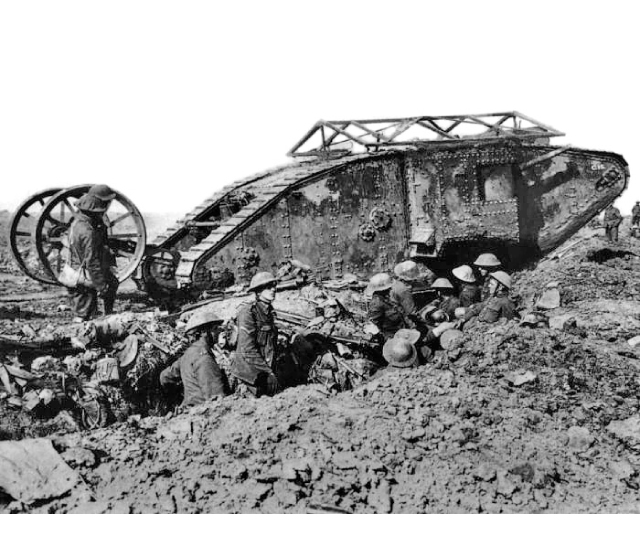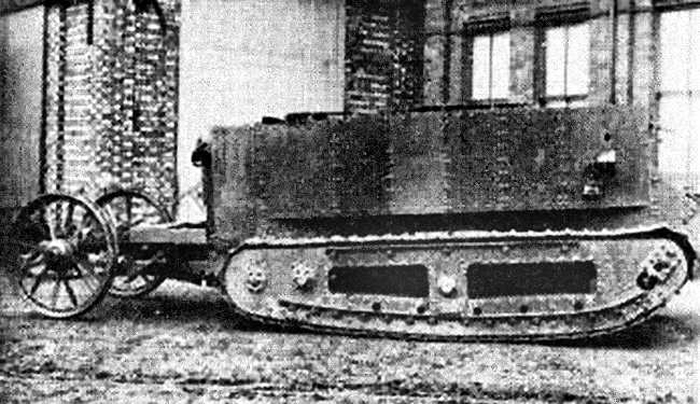Did you know that tanks, which were invented during the First World War, got their name as part of a plot to trick the Germans?
During 1915 it became clear that the German defenses on the Western Front was going to prevent the possibility of any large scale British or French breakthrough. In an attempt to break the deadlock the British military began to investigate new and alternative weapons.
At this point it was the Royal Navy who found themselves at the forefront of the development of armoured land weaponry. The Navy had been the best resourced arm of the British military before the war but had rapidly found themselves on the sidelines as the conflict largely stayed land-based in Europe. The Admiralty Armoured Car Division had already seen some success with the deployment of cars protected by light armour plating and equipped with machine guns. In order to expand upon this basic model they began to investigate the possibility of creating an armoured weapon on caterpillar tracks.
At exactly the same time Ernest Swinton, a British officer and War Correspondent, was also grappling with the stalemate in Europe and began to consider the possibility of a large vehicle on caterpillar tracks that could be used to destroy machine gun nests. For some time these two groups were entirely unaware of the existence (or thoughts) of the other and it was only when Sir John French insisted on progressing with armoured vehicle exploration that Swinton and the Navy were brought together to form the Landships Committee.
Two main prototypes were constructed during this process and were known as ‘Little Willie’, and ‘Big Willie’ respectively after a popular nickname for the Kaiser and his son. After a series of trials it was ‘Big Willie’ also known as ‘Mother’ that proved to be the most successful design and the British military ordered 100 machines to be constructed.
In order to maintain secrecy around the project and prevent the Germans from learning what they were creating, the British military authorities crafted a careful cover story. Factory workers building the new machines were informed that they were part of a project to construct mobile water tanks for the Russians, who were a British ally at the time. Because of the poor state of Russian roads these tanks would need caterpillar tracks in order to master the terrain.
Tanks were designed in two formats ‘Male’ and ‘Female’ depending upon the size and nature of the armament they carried. They first saw use in combat at Flers-Courcelette, part of the ongoing Somme Campaign in 1916.
During their use in the First World War, tanks had mixed success. They were indeed powerful and terrifying weapons when used against the Germans but, as a new weapon, the correct time and place to use them was still to be ascertained. They were also highly unreliable mechanically and prone to breaking down. The interior of each tanks was also a hot, noisy, and often fume filled environment for the crew.
Tanks saw perhaps their greatest success at the Battle of Cambrai in 1917 when they were used en masse against German lines. To ensure that the German defenders did not hear the approaching machines British and French planes repeatedly flew low over enemy trenches to drown out the noise.
It would not be until the Second World War that tanks would really begin to dramatically influence battles.









